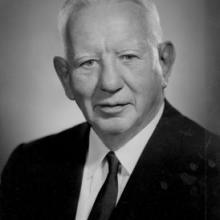
|
Image
 |
Paul M. Gross | 1919 - 1960 |
Chair of Chemistry (1919-48); Dean of Graduate school (1947-52); Dean of the University (1952-58); VP Educational Division (1949-60) Long-serving chair of chemistry, Gross performed pioneering research on airborne particulates and the production of radioisotopes for research and medical treatments. Co-creator of the Research Training Program which put Duke medical students into research for 9 months of their training. Gross developed a 'frangible bullet' for training aerial gunners in WWII and held two cigarette-related patents. National Science Foundation board member; President of American Association for the Advancement of Science 1962. Gross Hall is named for him. |
|
Image
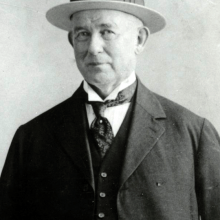 |
James Buchanan "Buck" Duke | 1856 - 1925 |
Grantor of the Indenture that established Duke University and Duke School of Medicine Industrialist and philanthropist who established the Duke Endowment, by which Trinity College was renamed Duke University. A codicil in his will, dated Oct. 10, 1925 -- just ten days before death -- gave $10 million to the Duke Endowment for a medical school, teaching hospital and nurses' dormitory on the Durham campus. |
|
Image
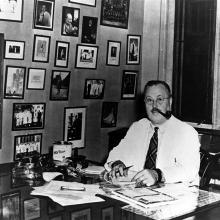 | 1927 - 1961 |
Founding Dean of the Medical School Pediatrician and founding dean of the Duke Medical School, which opened in 1930. Chair of Pediatrics until 1954. He led the formation of the 65th General Hospital, a Duke hospital army unit that treated more than 17,000 casualties in England during WWII. His tropical disease research during WWII took him to Panama and Haiti. He visited Japan in 1951 as part of research with the Atomic Bomb Casualty Commission. Davison was an advocate for the creation of the National Library of Medicine and pre-paid medical care, which led to the establishment of North Carolina's Blue Cross plans, among the first in the nation. The Medical School's Davison Hall is named for him. | |
|
Image
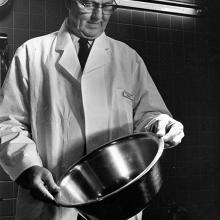 |
Deryl J. Hart | 1929 - 1960 |
First chairman of Surgery; Duke University President (1960-63) First user of ultraviolet light to sterilize an operating room. Hart also launched Duke's Private Diagnostic Clinic, surgical instrument shop and medical illustration department. He held several patents for surgical equipment he invented. |
|
Image
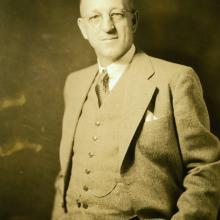 |
Clarence F. Korstian | 1930 - 1959 |
Founding dean, school of forestry; founding director, Duke Forest Working with visionary Duke president William Preston Few, Korstian helped acquire and organize the 4,700 acres of land that became the nucleus of the Duke Forest to support the new School of Forestry of which he was Dean. "I thought the Forest should serve the School of Forestry the way the hospital served the Medical School." The forest''s Korstian Division between Mt. Sinai Road and Whitfield Road in Orange County is named for him. |
|
Image
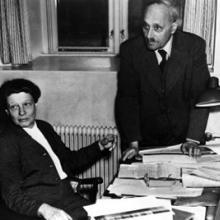 |
Hertha Sponer | 1936 - 1966 |
Professor of Physics Refuge from 1930s Germany, who became the first woman on the Duke physics faculty. Wrote the first book on molecular spectroscopy and confirmed many predictions of quantum mechanics, forming a bridge between chemistry and physics. |
|
Image
 |
Joseph W. Beard | 1937-1973 |
James B. Duke Professor of Surgery Hired for cancer and virus research in 1937, with funding from Lederle Laboratories. Beard and his wife and research partner Dorothy developed a killed-virus vaccine for horse encephalitis, AKA "blind staggers," using ultracentrifuges and chick embroyos. The vaccine saved hundreds of thousands of horses and protected humans, which also helping establish the notion that killed virus is effective and safe as a vaccine. Beard went on to make Duke a leader in virology research, including influenza, using an early electron microscope and the new Bell Building dedicated to research. He also identified links between viruses and human cancers and tested early versions of the flu vaccine using hog pens on a farm near Hillsborough. |
|
Image
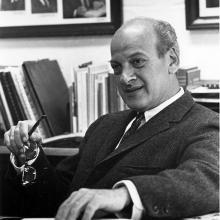 |
Philip Handler | 1939 - 1969 |
James B. Duke professor of Biochemistry, Chairman of Biochemistry Hired for protein research in 1938, he subsequently made the fundamental discovery that biochemical pathways are different for every part of metabolism. The Handler-Preiss cycle is named for him. Handler led Duke's post-war research into nuclear physics, including radioisotopes, tracers and genetic effects of radiation. He co-founded Duke's physician-scientist training program called the Research Training Program. Awarded the U.S. Medal of Science (1981). Left Duke to be President of the National Academy of Sciences. "It is imperative in the University to create interdisciplinary operations, crossing the life sciences with philosophy, religion, government, and sociology, because these greater questions will have to be resolved." (1968). |
|
Image
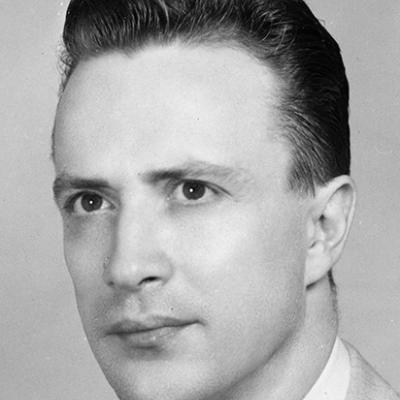 |
Ivan W. Brown Jr. | 1943-1968 |
James B. Duke Professor of Surgery Brown was a blood banking and transfusion expert, an early open-heart surgeon, and inventor of the heat and blood exchanger, a forerunner of the heart-lung machine that controlled a surgical patient's temperature. He was also the unofficial historian of the 65th General Hospital, a WWII field unit comprised of Duke medicine staff, where Brown helped establish the only blood bank in the European theater. He also designed and built Duke's hyperbaric chamber for studying blood gases and was the first surgeon to implant a cardiac pacemaker at Duke. More on Dr. Brown in the Medical Archives |
|
Image
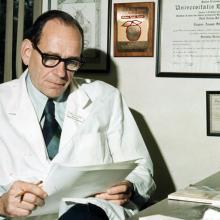 |
Eugene A. Stead, Jr. | 1947 - 1967 |
Chairman of Medicine (had been dean at Emory) A pioneer of venous catheterization, Stead was the founder of nation's first physician assistant program at Duke in 1964. He also founded the Duke Databank for Cardiovascular Diseases, a pioneering effort to use computers to study vast collections of medical data and forerunner of Duke Clinical Research Institute (DCRI). |
|
Image
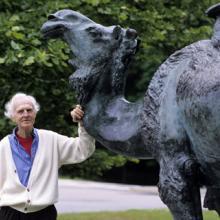 |
Knut Schmidt-Nielsen | 1952 - 1996 |
J. B. Duke Professor of Biology Considered the "father of comparative physiology and integrative biology." He studied animals from extreme environments, including the camel. Commemorated by a bronze statue on west campus, immediately south of the Biology building. His memoirs were titled "The Camel's Nose." |
|
Image
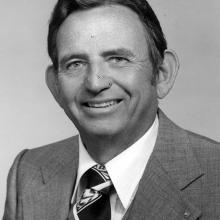 |
Ewald W. Busse | 1953-1982 |
Chairman of Psychiatry, Associate Provost and Dean of Medical Education A psychiatrist and pioneer in Gerontology, he founded what became Center for Study of Aging and Human Development. The Busse Building is named for him. |
|
Image
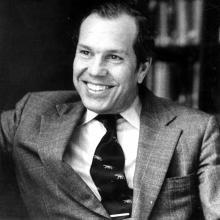 |
James B. Wyngaarden | 1956-1982; 1990-1994 |
First director of physician-scientist Research Training Program; Chairman of Medicine, (1967-1982); NIH Director (1982-89); Associate Vice Chancellor (1990-94). A pioneer in molecular medicine through his studies of purine biosynthesis and gout, Co-Editor of "The Metabolic Basis of Inherited Disease." Recruited Robert Lefkowitz to join Duke. |
|
Image
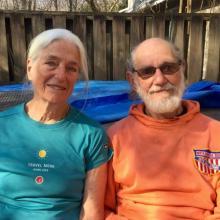 | Peter Klopfer | 1958 - 2003 |
Research Professor of Biology, Co-Founder Duke Primate Center (now Lemur Center) A zoologist who studied maternal bonds and primate hibernation, Klopfer helped establish the link between oxytocin and bonding. He was a co-founder of the Duke Lemur Center (then Duke Primate Center). Duke women's track coach. Jailed for refusing the military draft in the Korean War, he later became the plaintiff in a 1967 U.S. Supreme Court case concerning his right to a speedy trial for protesting Jim Crow segregation in a Chapel Hill restaurant. |
|
Image
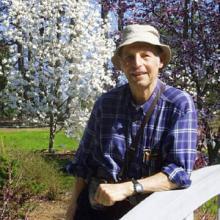 | Horst Meyer | 1959 - 1984 |
Fritz London Professor of Physics A low-temperature experimentalist, Meyer studied the properties of fluids near their liquid-vapor critical point, particularly Helium-3 and Helium-4, with NASA support. His graduate student, Robert Richardson, shared the 1996 Nobel prize in physics for work on superfluidity in Helium-3. Awarded Duke University medal in 2014. The iconic Asian bridge in Duke Gardens is named for him. |
|
Image
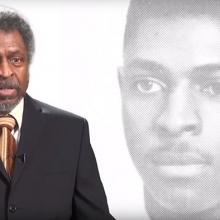 | Wilhelm Delano Meriwether | 1963 - 1967 |
First Black medical student and first Black M.D. at Duke. Meriwether was the first and only Black student at Duke Medicine during his four years in Durham. A hematologist and leukemia researcher, he became the leader and public face of the U.S. Public Health Service's efforts to immunize more than 100 million people against the 1976 swine flu. Served as a missionary doctor 1983-90 in Gazankulu and Soweto, South Africa where he was one of six doctors for 500,000 people. Forty-fifth fastest 100-meter runner in history (10.5 sec) and 1972 US Indoor Track and Field Champion. |
|
Image
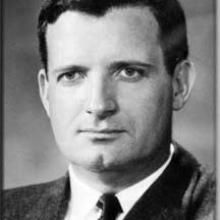 | David C. Sabiston | 1964 - 1994 |
Chairman of Surgery Cardiovascular surgeon who was one of the first to perform bypass operations with venous grafts, and a strong backer of physician-scientist model of medical education. Legendary educator, and founder of Division of Surgical Sciences, a basic research unit within Surgery. |
|
Image
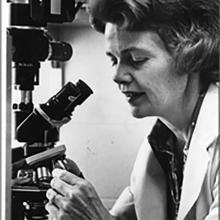 | Rebecca H. Buckley | 1968-2022 |
Director of Duke's Asthma and Allergic Diseases Center, Chief of Allergy & Immunology, JB Sidbury Professor of Pediatrics Pioneered use of bone marrow and thymus transplants to treat SCID -- "bubble boy disease," persuaded NC legislators to add SCID to the newborn blood testing panel, was still winning grants and publishing scientific work in her late 80s. |
|
Image
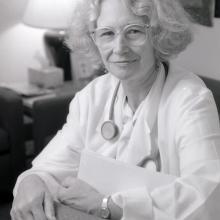 | Catherine Wilfert | 1969 - 1996 |
Chief of Pediatric Infectious Diseases Showed that that the first AIDS drug, AZT, could be used to prevent mother-to-child transmission of HIV. Left Duke to become scientific director of the Elizabeth Glaser Pediatric AIDS Foundation (1996), President of Infectious Diseases Society of America. |
|
Image
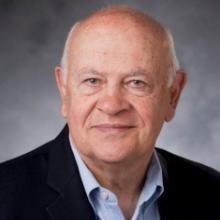 | Dani P. Bolognesi | 1971-2002 |
Professor of surgery, Professor of Virology Immunologist who founded Duke's Center for AIDS Research. He screened 300 compounds to see if they affected the virus, revealing the first AIDS drug, AZT. He left Duke to lead Trimeris, which produced the Duke-licensed anti-HIV drug Fuseon. Became emeritus in 2002. |
|
Image
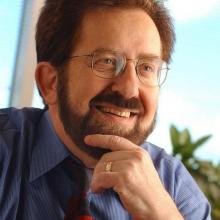 | Allen D. Roses | 1971-1998 |
Chief of Neurology, Director of Center for Human Genomics, Founding Director Bryan Alzheimer's Research Center Chief of neurology for 27 years, he was a co-discoverer of the Apo-E gene's role in Alzheimer's Disease and the TOMM40 gene as a target for Alzheimer's therapies. He left Duke to lead worldwide genetics research at Glaxo Wellcome for ten years, but returned to Duke. |
|
Image
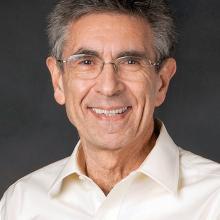 | Robert Lefkowitz | 1973 - Present |
J.B. Duke Professor of Medicine While trying to understand the action of adrenaline, Lefkowitz discovered the 7-transmembrane G-coupled protein receptors (GPCR), a large family of cell surface receptors which are now the target of more than a third of all prescription drugs. Lefkowitz and his former postdoc, Brian Kobilka of Stanford, shared the 2012 Nobel Prize in Chemistry for discovery and characterization of GPCR. Lefkowitz spent his entire career at Duke; he is the longest-serving Howard Hughes Medical Institute investigator; and winner of National Medal of Science and Shaw Prize. |
|
Image
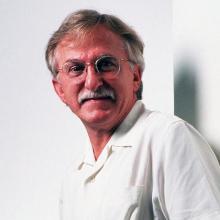 | Paul L. Modrich | 1976 - Present |
J. B. Duke professor of biochemistry; Howard Hughes Medical Institute investigator Discoverer of DNR repair mechanisms, including mismatch repair (MMR) that is key to DNA fidelity and important to understanding many cancers. Howard Hughes Medical Institute investigator; Winner of 2015 Nobel Prize in Chemistry |
|
Image
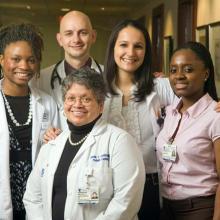 | Brenda Armstrong | 1977 - 2018 |
Senior Associate Dean for student diversity, recruitment and retention Duke's first African-American full professor in pediatrics, she became the second Black woman in the country to become board-certified in pediatric cardiology. As an undergraduate at Duke, she had been a co-organizer of the Allen Building takeover in 1969. |
|
Image
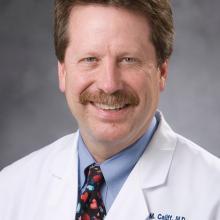 | Robert M. Califf | 1980 - 2019 |
Vice Chancellor for Clinical and Translational Research; Founding Director of DCRI; Founding Director of Duke Forge. A cardiologist who led the GUSTO clinical trial of the clot-busting drug TPA in heart attack, which laid the foundation for Duke to lead massive clinical trials and to form the Duke Clinical Research Institute. Califf was the founding director of DCRI, Director of the Food and Drug Administration (2016-17) and vice chancellor for clinical research at the School of Medicine. He left Duke in 2020 to lead clinical policy and strategy at Verily, an Alphabet (Google) company. |
|
Image
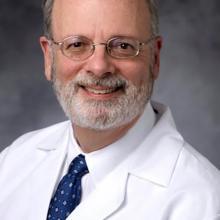 | Barton F. Haynes | 1980 - Present |
Chairman of Medicine (1995-2002); Director of Duke Human Vaccine Institute (1999-) Immunologist and HIV/AIDS researcher, long-serving head of the Human Vaccine Institute. Haynes was named one of the 50 most innovative people in healthcare in 2016 and is regularly among Clarivate's most highly-cited scientists. |
|
Image
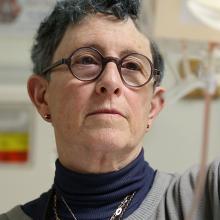 | Joanne Kurtzberg | 1988 - Present |
Jerome S. Harris Distinguished Professor of Pediatrics A pediatric oncologist, she studies stem cells of the blood. Kurtzberg is a world authority on umbilical cord blood banking and transplantation and helped develop two leukemia drugs. |
|
Image
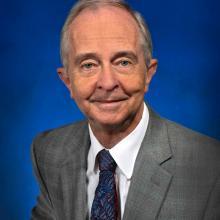 | Berndt Mueller | 1990 - Present |
J. B. Duke Professor, Chair of Physics, Associate Dean for Natural Sciences Mueller was among the first theorists to explore the transition from hadrons to a plasma of free quarks and gluons at temperatures exceeding 2 trillion degrees Kelvin. He is well-known for the prediction that strange quarks would be abundantly produced when such a quark-gluon plasma is formed. |
|
Image
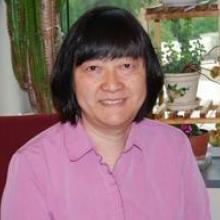 | Xinnian Dong | 1992 - Present |
Arts & Sciences Professor of Biology; Howard Hughes Medical Institute Investigator Botanist who studies the 'immune system' of plants, including a thorough investigation of "systemic acquired resistance" and genes for engineering disease-resistant crops. Was part of the first class of plant scientists to be included in the Howard Hughes Institute. |
|
Image
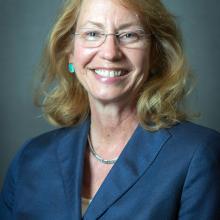 | Cynthia A. Toth | 1993 - Present |
Joseph A.C. Wadsworth Distinguished Professor of Ophthalmology, Professor of Biomedical Engineering A pioneer of macular translocation surgery for age-related macular degeneration and retinal imaging with optical coherence tomography (OCT). |
|
Image
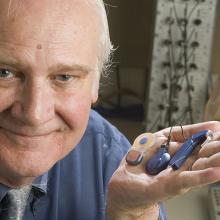 | Blake S. Wilson | 1994 - Present |
Adjunct Professor of Surgery, Consulting Professor of Electrical Engineering Wilson dramatically improved signal processing of cochlear implants with continuous interleaved sampling (CIS), helping the hearing impaired understand speech. Co-Winner of the 2013 Lasker-Debakey Clinical Medical Research Award for cochlear implants with Ingeborg J. Hochmair-Desoyer and Graeme Clark. |
|
Image
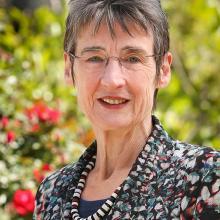 | Brigid L.M. Hogan | 2002 - Present |
Chair of Cell Biology A pioneer in stem cell research and developmental biology, she was the first female chair of a basic science department at Duke (Cell Biology). |
|
Image
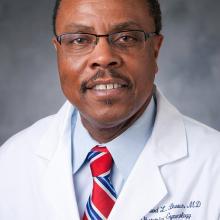 | Haywood L. Brown | 2002 - 2016 |
Chair of Obstetrics and Gynecology, F. Bayard Carter Distinguished Professor The first African-American chair of Obstetrics and Gynecology at Duke, Brown studied maternal-fetal medicine, including health disparities in perinatal outcomes. |
|
Image
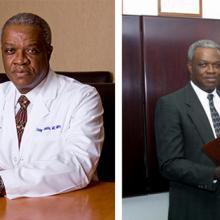 | Danny O. Jacobs | 2003- 2012 |
Chair of Surgery, David Sabiston professor of Surgery Duke's first African-American Chair of Surgery, Jacobs left Duke to become Executive VP and Provost at University of Texas Medical Branch and then the fifth president of Oregon Health & Science University. |
|
Image
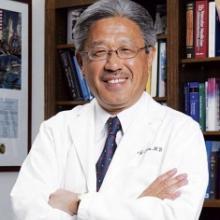 | Victor J. Dzau, MD | 2004 - 2015 |
Chancellor of Health Affairs, President and CEO of Duke Medicine Chairman of Medicine at Harvard and Stanford before joining Duke, Dzau is a cardiologist who's work on angiotensin-converting-enzyme led to the development of ACE inhibitor therapy for hypertension. He guided the formation of the Duke-NUS Medical School in Singapore, and helped open the North Carolina Research Campus in Kannapolis and the Duke-led longitudinal MURDOCK study there. Left Duke in 2015 to become president of the National Academy of Medicine. |
|
Image
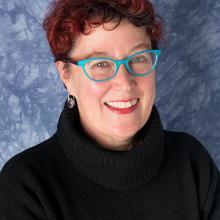 | Terrie Moffitt | 2009 - Present |
Nannerl O. Keohane Professor of Psychology and Neuroscience Developmental psychologist who leads two major longitudinal studies on nature vs. nurture and childhood indicators of later life outcomes. Member of National Academy of Medicine; Klaus Jacobs research prize; Most highly-cited scientist; Fellow, Association for Psychological Science |
|
Image
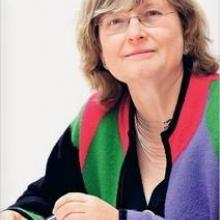 | Ingrid Daubechies | 2011 - Present |
J. B. Duke Professor of Mathematics and Computer Engineering Mathematician who developed the 'wavelet' theory that enables digital signal processing and photo compression. Winner of Benjamin Franklin Medal, MacArthur Foundation Fellowship. Member of both National Academy of Engineering and National Academy of Sciences. President, International Mathematical Union. |
